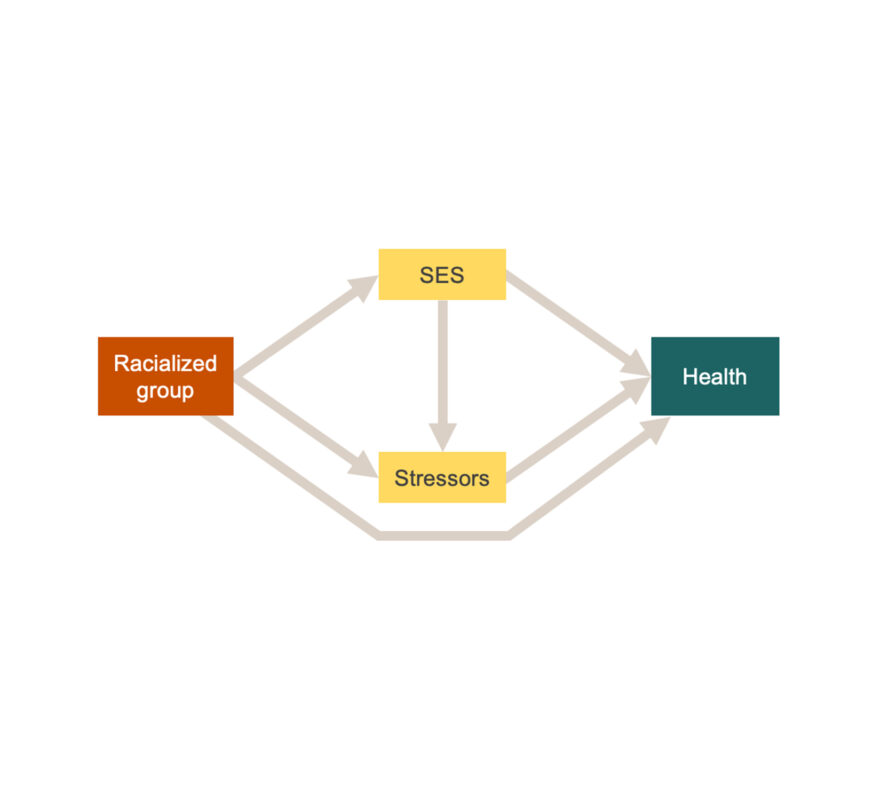Racialized Health Inequities: Quantifying Socioeconomic and Stress Pathways Using Moderated Mediation
In this study, Brown and his associates ask how unequal resources and stressors contribute to health inequities, and how these factors impact racial groups differently.
Summary:
Racism creates health inequities in many ways. Unequal distribution of both helpful resources and harmful stressors leads to poorer health for minoritized communities. However, questions remain about the relationships among race, socioeconomic resources, stressors, and health. As they study how resources and stressors account for health inequities, scholars must also ask how each factor may affect different racial groups in different ways.
In this study, Brown and his associates integrate these lines of questioning as they analyze data from the Health and Retirement Study about the health of older adults. They compare the experiences of white, Black, and Mexican Americans, analyzing socioeconomic factors (such as education, income, and wealth), stressors (such as discrimination, traumatic events, and neighborhood condition), and health outcomes (including self-rated health, functional limitations, and key biological markers).
The study had several important findings. Compared to white Americans, the Black and Mexican Americans in the study were disadvantaged across the socioeconomic factors assessed. Black Americans had higher exposure than white Americans to seven of eight stressors, while Mexican Americans had higher exposure to five of eight. Socioeconomic resources were consistently associated with better health outcomes; stressors were largely associated with poorer health.
As the researchers had hypothesized, the associations among socioeconomic resources, stressors, and health tended to be weaker among Black and Mexican Americans than among white Americans. For example, higher income was more strongly associated with better self-rated health among white Americans than Black Americans. Similarly, education had more of a protective effect for white Americans than Black Americans when it came to biological markers of health. Studies that do not account for differences like these may significantly overestimate how much of the racial health disparity can be explained by these socioeconomic resources and stressors.
Brown and his associates’ work demonstrates the need for continued attention to how various factors impact the health of racial groups differently. There is no one-size-fits-all method for understanding population health: in a racialized society such as the United States, the inequities causing health disparities remain more complex than we can quantify.
Brown, Tyson H., Taylor W. Hargrove, Patricia A. Homan and Daniel E. Adkins. 2023. “Racialized Health Inequities: Quantifying Socioeconomic and Stress Pathways Using Moderated Mediation.” Demography 60(3):675–705.

